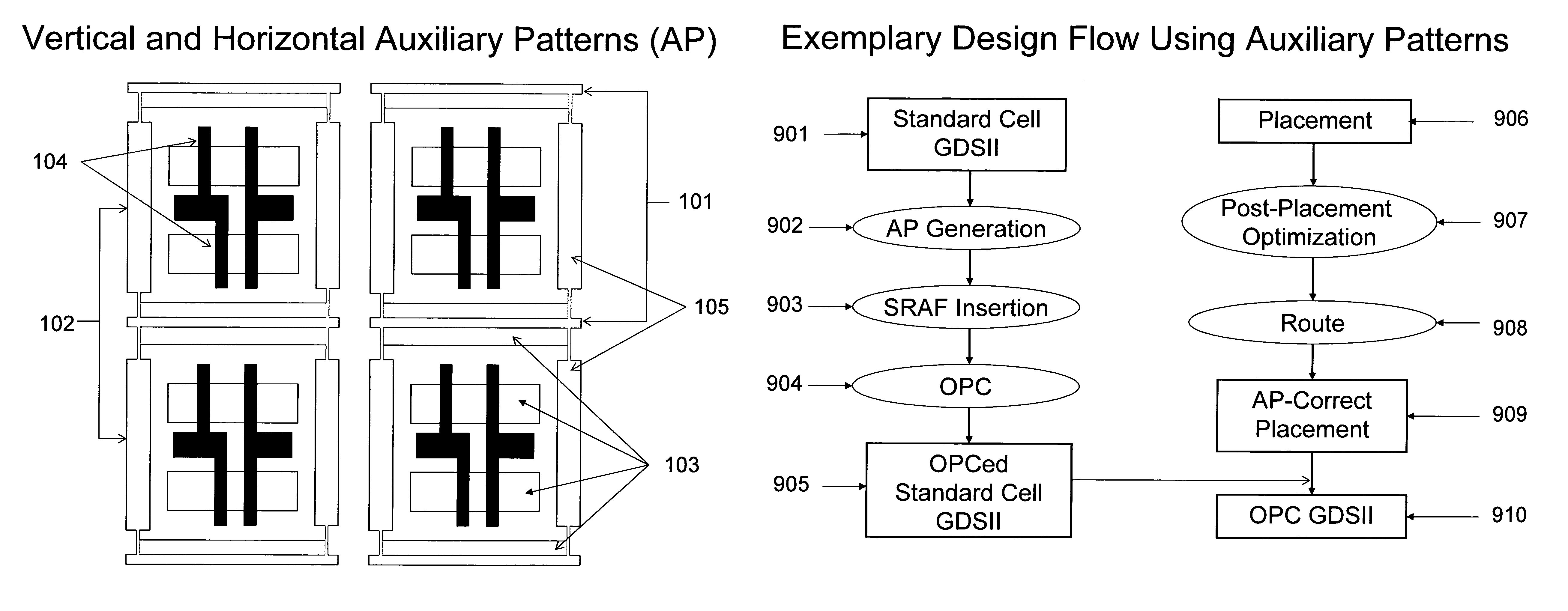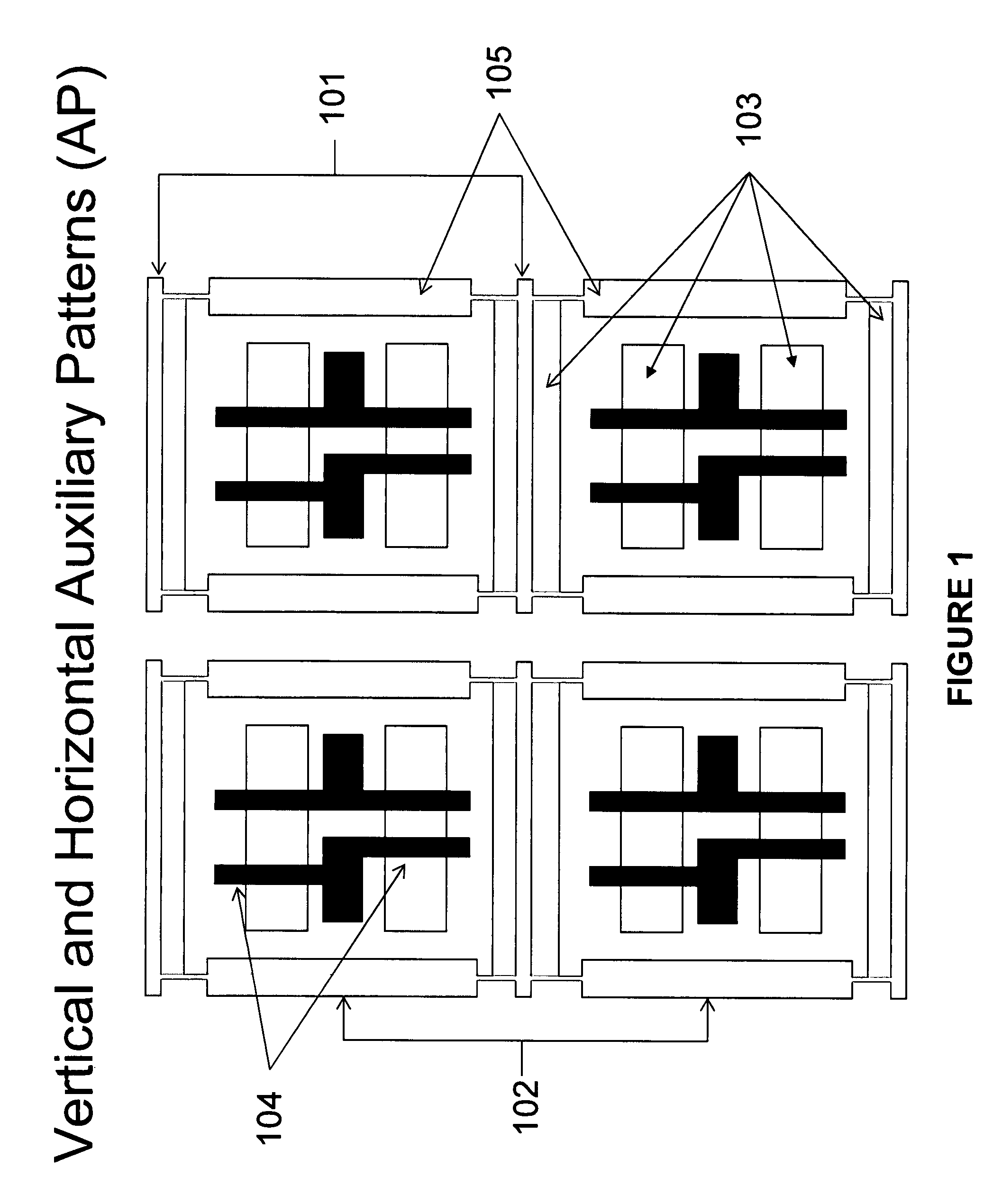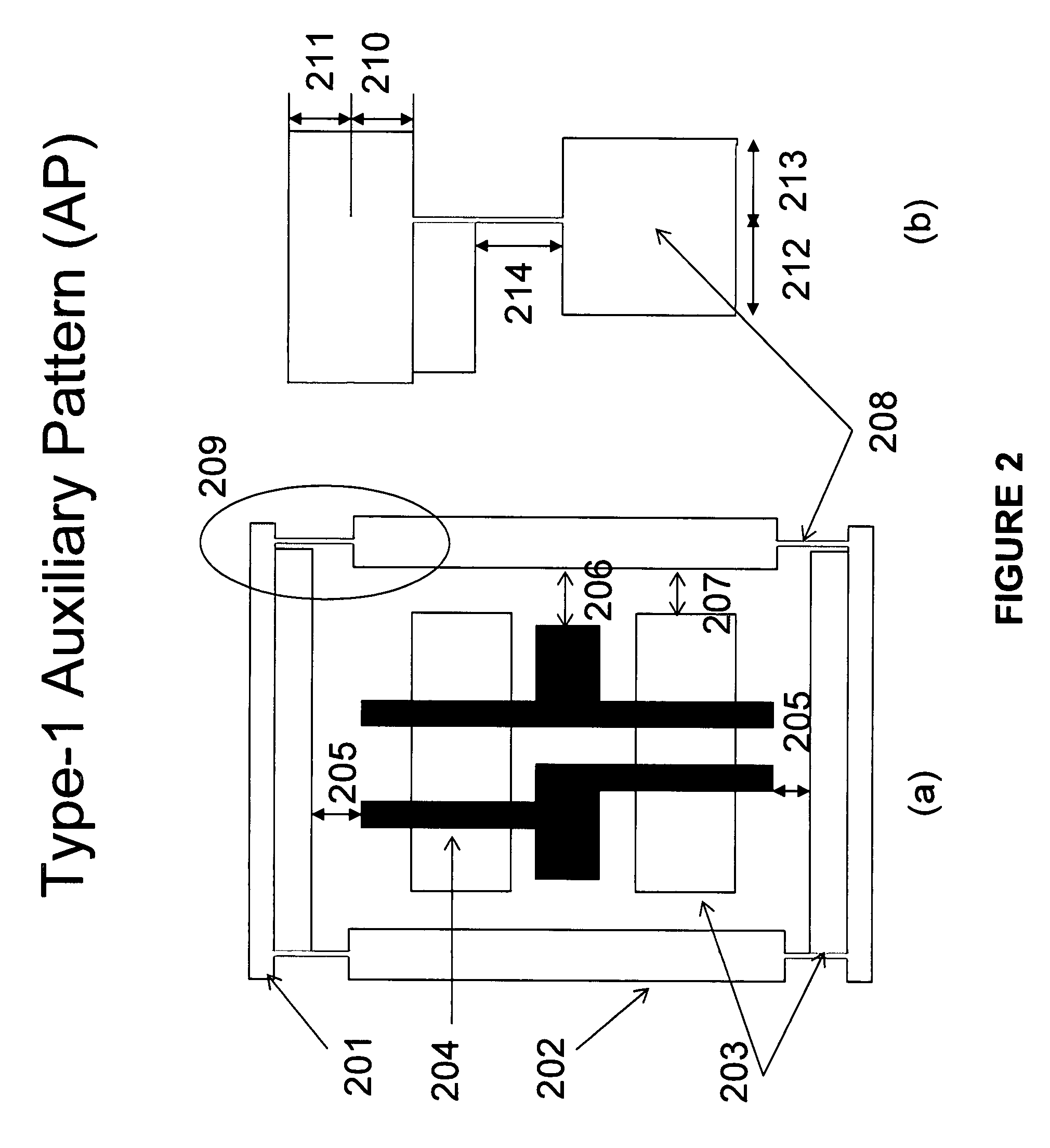Method, apparatus and system for designing an integrated circuit including generating at least one auxiliary pattern for cell-based optical proximity correction
a technology of integrated circuits and auxiliary patterns, applied in the direction of program control, instrumentation, and semiconductor/solid-state device details, can solve the problems of large difference in feature critical dimensions between cell conventional and the runtime of model-based optical proximity correction tools, so as to reduce the runtime
- Summary
- Abstract
- Description
- Claims
- Application Information
AI Technical Summary
Benefits of technology
Problems solved by technology
Method used
Image
Examples
Embodiment Construction
[0017]The invention provides systems and methods for auxiliary pattern generation for cell-based optical proximity correction. Embodiments of the invention provide software that uses methods to overcome deficiencies of prior cell-based optical proximity correction approaches by generating auxiliary patterns for a standard-cell layout and, optionally, performing a post-placement optimization of a standard-cell block to increase the number of auxiliary patterns (and hence the quality of cell-based optical proximity correction) in the overall block design. Software of the invention processes an existing standard-cell layout (e.g., input in GDSII Stream format) and then generates a new standard-cell GDSII which has added into it auxiliary patterns as well as subresolution assist features (the latter type of features are known as “scattering bars”, or SRAFs). Added auxiliary pattern features include vertical (V-AP) and / or horizontal (H-AP) auxiliary patterns. V-AP features print on the w...
PUM
 Login to View More
Login to View More Abstract
Description
Claims
Application Information
 Login to View More
Login to View More - R&D
- Intellectual Property
- Life Sciences
- Materials
- Tech Scout
- Unparalleled Data Quality
- Higher Quality Content
- 60% Fewer Hallucinations
Browse by: Latest US Patents, China's latest patents, Technical Efficacy Thesaurus, Application Domain, Technology Topic, Popular Technical Reports.
© 2025 PatSnap. All rights reserved.Legal|Privacy policy|Modern Slavery Act Transparency Statement|Sitemap|About US| Contact US: help@patsnap.com



